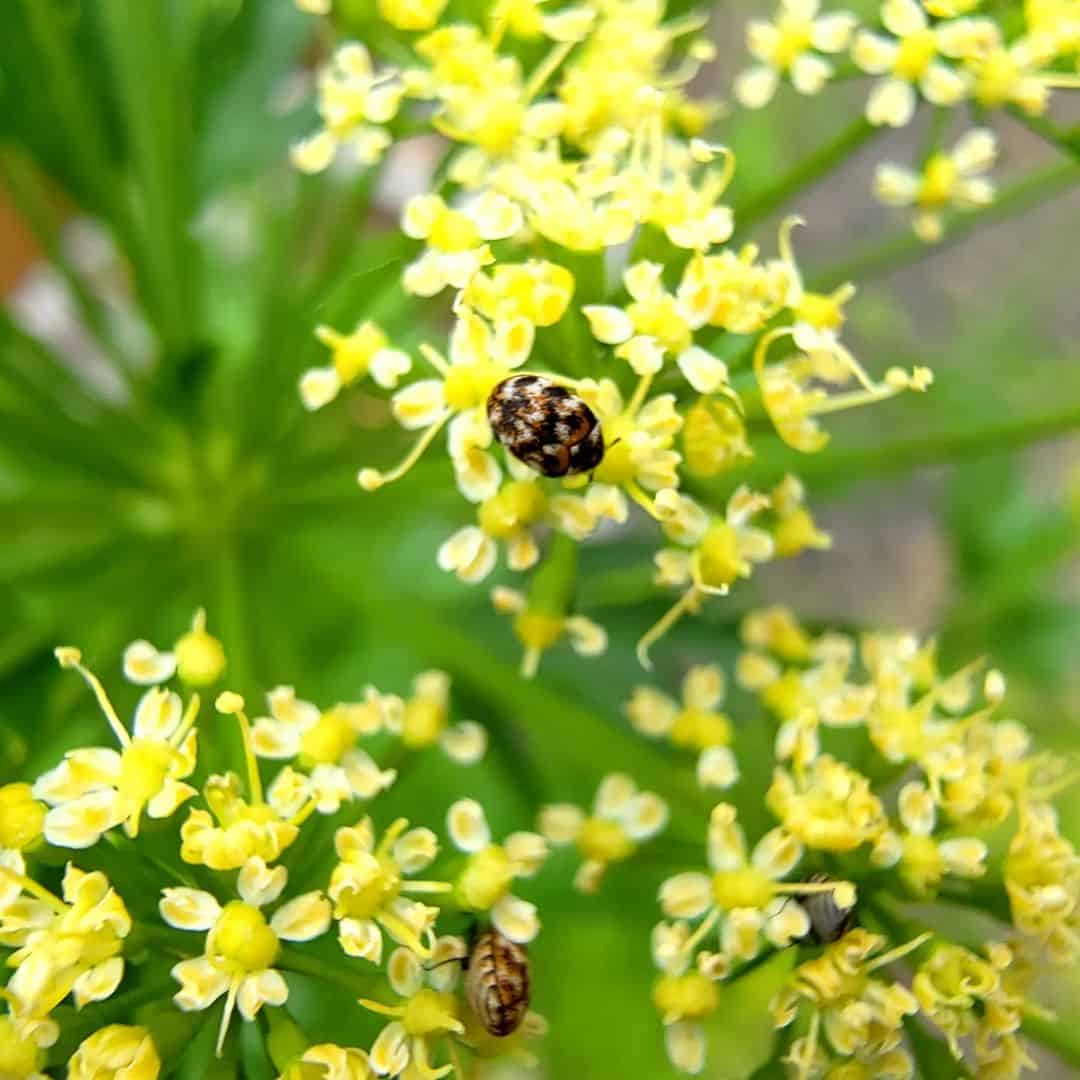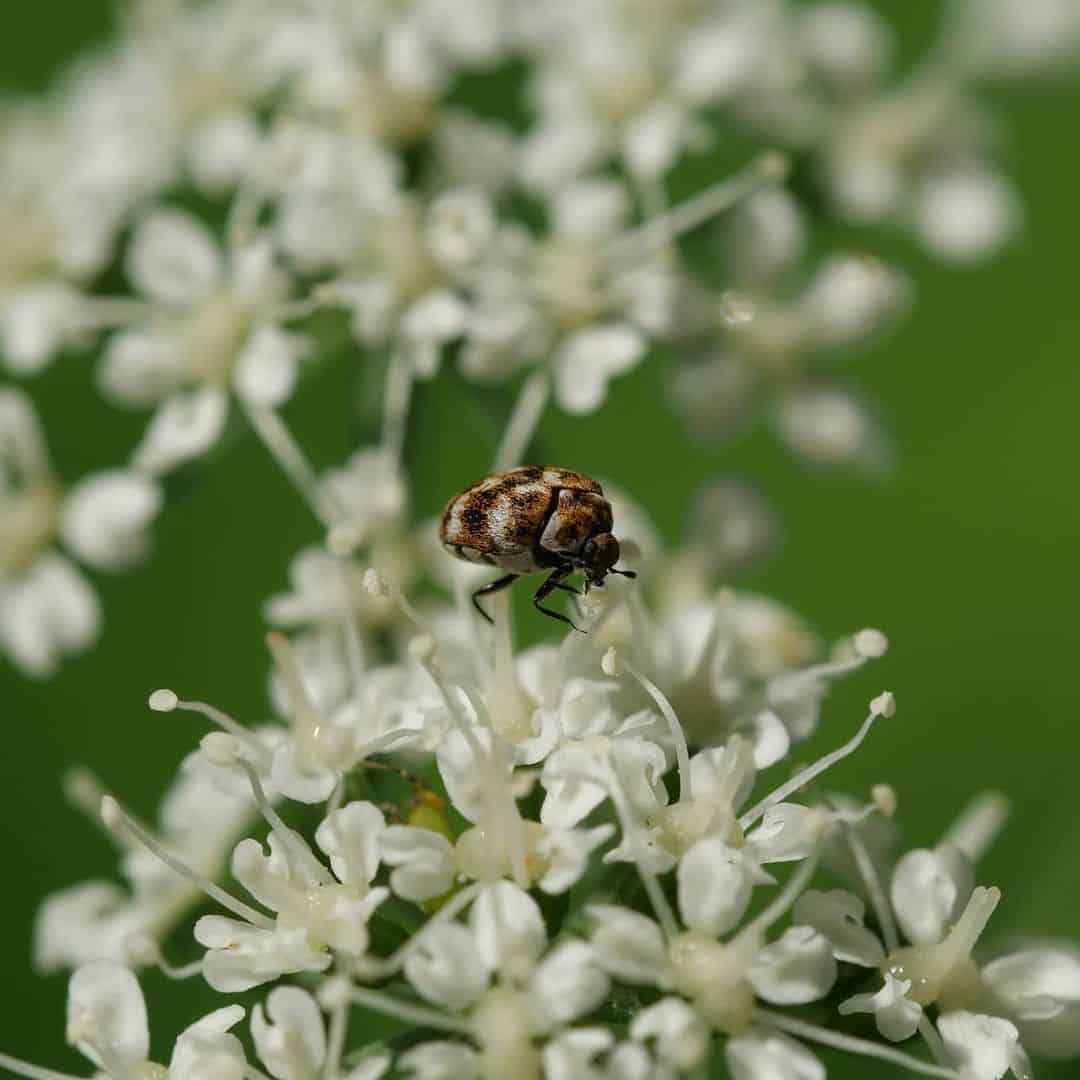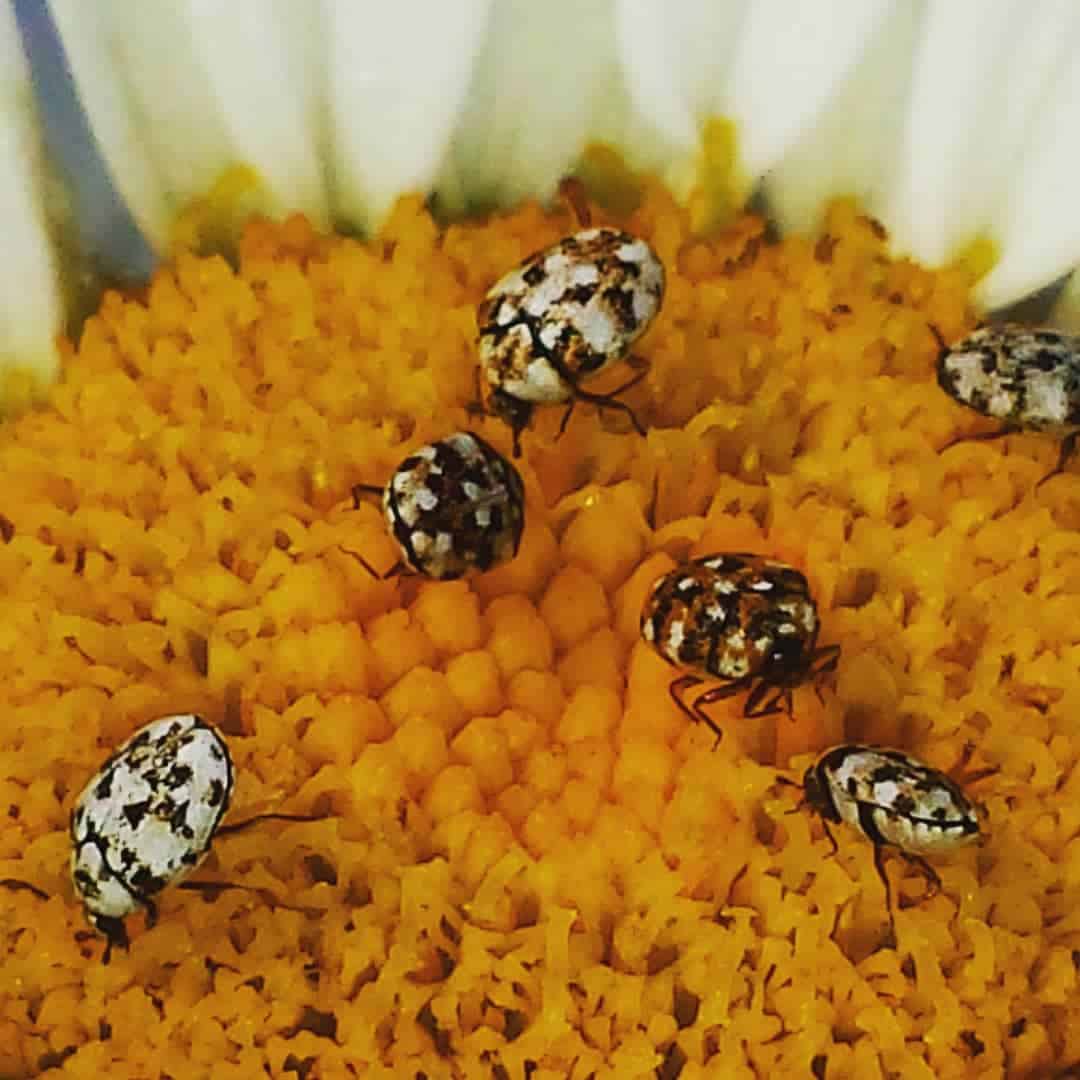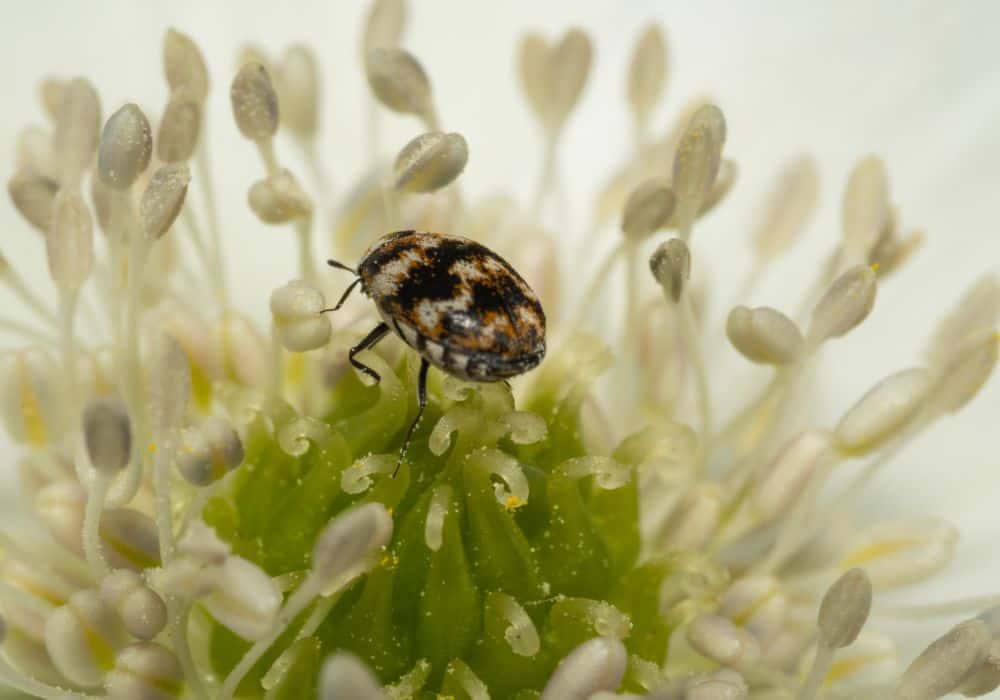Since the dermestid beetle is naturally an outdoor insect, it is only right for you to be concerned if you find a couple of them in your house. Well, not to worry, we’ll answer the question, can dermestid beetles infest a house?
As a matter of fact, the Dermestid beetle, although seemingly harmless, can, much like many other household pests, infest your home and wreak havoc if not controlled.
They’re known to scavenge materials of animal origin, such as leather, wool, lint, and fur. For this reason, you’ll likely find them in your home, destroying items made from one of such materials.
Here, we’ll narrow in on the dermestid beetle, revealing how it can gain easy entry into your house and the steps you should take to control its infestation.
Do Dermestid Beetles Infest Homes?
Dermestid beetles, sometimes called carpet beetles or skin beetles, are tiny reddish-brown or black feathers, insects of the family Dermestidae, drawn to organic materials derived from animals. Although you’ll mostly see these bugs in their natural habitat outdoors, they’ll sometimes invade homes for food or conducive breeding sites.
Once in your home, they waste no time to reproduce, and because they’re rapid breeders like most common house pests, they increase in number soon enough, spreading on surfaces like carpet, clothing, blankets, upholstery, and pillows.
Despite their small size, once these insects infest your home, they can cause damage to specific susceptible items you may find valuable. However, more than that, they can cause a great deal of discomfort and make your home somewhat inhabitable.
Why Do Dermestid Beetles Infest Houses?
Although Dermatitides beetles usually gain entry into homes for a number of reasons including food availability and easy access, there are three primary reasons why you’ll find them in your house. They include:
1. To Search For Food
The primary reason dermestid beetles will infest your home is to search for food. As natural decomposers, they seek out items made from organic materials such as animal fiber.
They also feed on organic wastes like food debris and animal waste. So, keep your environment clean, especially your kitchen area, as that’s a likely entry point.
Also, these scavenging insects can detect decaying matter from afar. So if dead insects like bees or animal carcasses like those of rodents are lying around your house, best be sure the dermestid beetle will find its way in.
2. To Reproduce Their Young
Additionally, dermestid beetles find dark, hidden areas suitable for breeding. For this reason, they’ll invade your home in search of such places to lay and hatch their eggs.
Once in your home, these pests will seek out undisturbed areas beneath your furniture, basement, old clothes storage, and other places you’re less likely to spot them.
3. To Seek Shelter From Harsh Weather
Asides from reproducing, dermestid beetles may infest your home to seek warmth and shelter from harsh weather conditions. For instance, because they only thrive in warm weather, they’ll most likely enter your home during winter to protect themselves and ensure their survival.
Signs of Dermestid Infestation in Your House

Image Credit: fortheloveofseed
You may not be able to detect an infestation at its initial stage because the tiny eggs can be difficult to spot. However, as time passes, you may notice unmistakable signs of their presence in your home. Let’s look at a few of these tell-tale signs:
1. Presence of Larvae
Although their eggs may be too tiny for your eyes to spot, larvae are comparably larger. This means that you can catch a glimpse of them in your home. Likewise, unlike the stagnant eggs, the larvae’s movement helps make them more detectable.
Remember that because the dermestid beetle breeds rapidly, seeing one larva typically means several others are present in your home. Additionally, it would be best to note the area where you spotted the beetle and treat it as a potential infestation site.
2. Damaged Carpets and Fabric
A surefire way to detect dermestid infestation in your home is to check for signs of damage on your woolen carpet and other home items made of natural fibers. Due to their attraction to organic materials, carpet beetle larvae find their way into clothing and carpets, causing noticeable damage as they feed on them.
So if you inspect these items and notice holes and chopped bits, you likely find these pests creeping on them.
3. Presence of Adult Beetle
Adult dermestid beetles are outdoor insects. Therefore, spotting them in your house usually means they’ve found themselves a spot to lay eggs. Usually, because of their attraction to light, you’ll see them flapping their wings in areas with enough sunlight or artificial light sources.
Noticing these flying insects in your home is a sure sign that their eggs lie around certain areas of your house. Unfortunately, it’ll be challenging to figure out their precise breeding areas. However, since you’re now aware of their fondness for organic materials, you can tailor your search and possibly successfully locate them.
4. Shed Larvae Skin
Finding accumulated shed skins of dermestid beetles in your home means you need to get ready to tackle the infestation. This shed skin results from dermestid larvae undergoing molting as they grow. The shedding of skin will occur several times (7–9 times) throughout their transition from larval stage to pupa; hence you may find an alarming amount.
Not only should you look out for shed larvae skin but also take note of the areas you find them as that may be an infestation site.
Common Areas in the Home Where Dermestid Beetles Infest

Image Credit: vegan_venator
When dermestid beetles find their way into your house, they choose specific areas to make their temporary habitat. These areas are usually suitable breeding sites and possess sufficient food for them to develop.
1. Carpets
If certain floor areas of your house are covered with carpets or rugs, and you find signs of infestation in those same areas, there’s a high chance you’ll find them in these floor coverings. Carpets and rugs provide the warmth dermestid beetles need to thrive while serving as excellent food sources.
It is important to note that some dermestid beetles like black carpet beetles and varied carpet beetles will naturally attack any wool carpeting. On the other hand, larder beetles will only attack ones soiled with fish oil and other protein stains.
2. Closets and Wardrobes
Closets and wardrobes contain clothing made from organic fibers that dermestid beetles are attracted to, making them a primary location for their infestation. So if you have pieces of clothing made from cotton, leather, wool, and silk, you can be sure these tiny pests will make your closet their home.
You’ll know dermestid beetles reside in your closet if you start noticing damages to items stored there. Once you’ve detected this, it’s best to seek measures to get rid of them and prevent their spread to other areas of your home.
3. Upholstery
Dermestid beetles will infest your furniture, especially if padded or covered with organic materials like leather and silk. These pests will not only form a base in these upholstered furniture but also feed on them, sometimes causing irreplaceable damage, especially if you detect the infestation at a later stage.
4. Basements and Attics
Dermestid beetles find dark and undisturbed areas of your house ideal infestation areas. For this reason, they will make their base in your attic and basement, destroying the organic materials they find there. These beetles can hide in your attic and basement, breeding and feeding for years without being detected.
So if you’ve found noticeable signs of infestation in your home, it’s best to thoroughly inspect these areas as well.
5. Shelves and Storage Areas
Some Dermestid beetles love to attack storage areas, feeding on stored items and spices like pepper, cake mixes, and flour. Additionally, they’ll feed on book bindings, ravage old books stored in dark and dry areas like in your home, and may even infest your shelves containing valuable books, destroying them in the process.
Once you notice these creatures have infested your home, It’s advisable to check places where you store your books and kitchen ingredients to prevent losing valuable materials.
Tips for Keeping Dermestid Beetles Out of Your House

Image Credit: the_warriors_of_the_interweb
As mentioned earlier, dermestid beetles are naturally outdoor insects and would only infest your home if they find it conducive to survival. Here are steps to prevent them from entering your home and damaging your property.
1. Keep a Clean Space
Since these pests are drawn to organic waste, it is important to keep your house in a constant clean state. Ensure you throw out trash, get rid of old and unused clothes and books, and keep dark spaces like cabinets, bookshelves, basements, and attics organized.
If you own pets, ensure you don’t leave their shed hairs lying around as they attract these pests. Most importantly, vacuum your carpets and rugs as often as possible and keep your furniture covers free from debris that may attract Dermestid beetles.
Locate and seal points of entry: Dermestid beetles will enter your homes through cracks and crevices in your windows, doors, and walls. Therefore, you should be on the lookout for these tiny openings and seal them up once detected.
2. Store Items Properly
Having adequate storage measures in place for your household items, like food or animal-derived fabric material, is a great idea. We recommend you store your grains, cereals, and dry pet food in airtight containers and keep your legumes in cool places. You should also keep clothing stored in boxes and airy places in the house.
If you store items in your basement and attic, it’s best to Install humidifiers to reduce moisture and prevent the survival and spread of these pests.
3. Observe Previously Infested Areas
Carry out a thorough inspection of specific parts of your house where these beetles have once attacked, as they usually have a high chance of being attacked again. Ensure you give more attention to these areas when cleaning your home. If possible, replace carpets, rugs, and upholstered furniture that have been infested.
Likewise, try decluttering your previously infested closet, attic, and basement. Discard unwanted items that can attract these pests and keep the place clean, airy, and dry at all times.
Final Thoughts
Although dermestid beetles aren’t disease carriers and don’t bite humans, they can damage a lot in your home if left to breed uncontrollably. So, while it’s okay to use bug sprays to help eliminate these beetles, we advise you to seek out pest control services, as they’ll provide the best methods to manage the situation.
